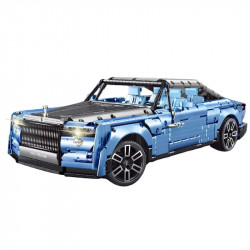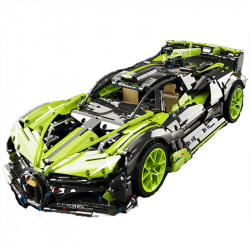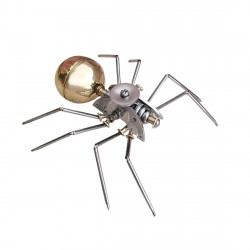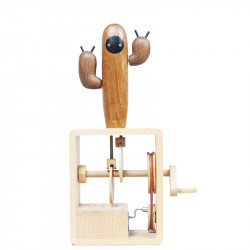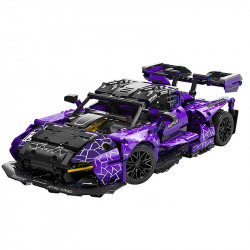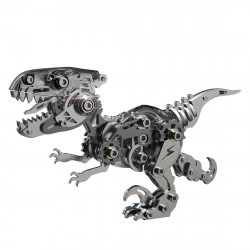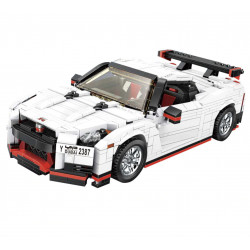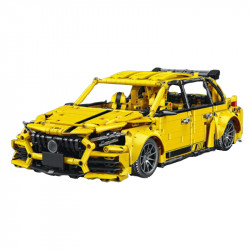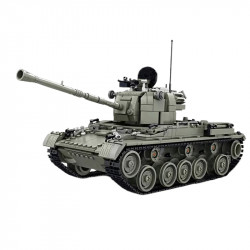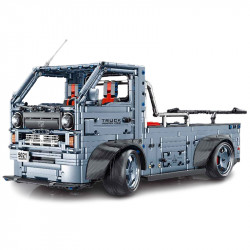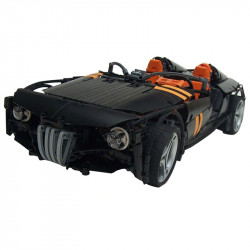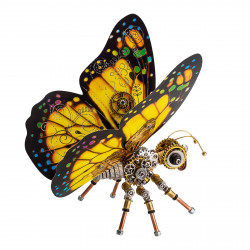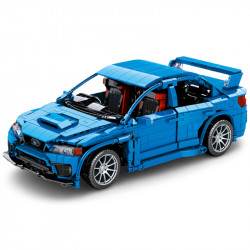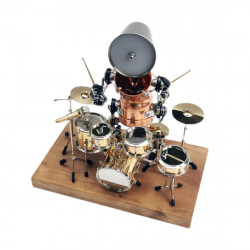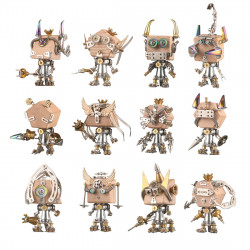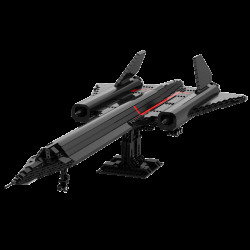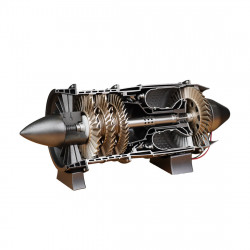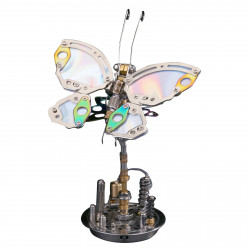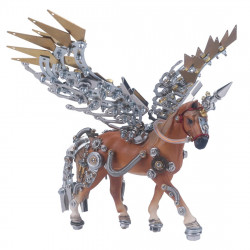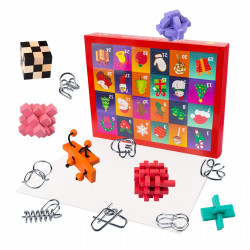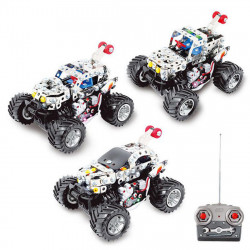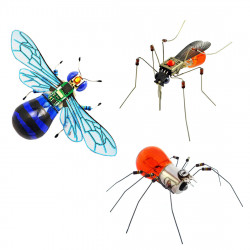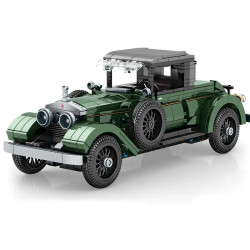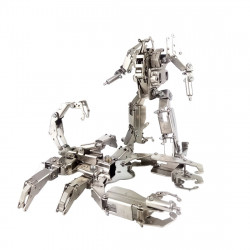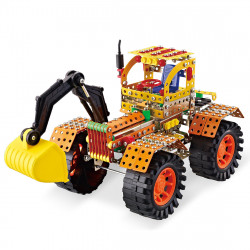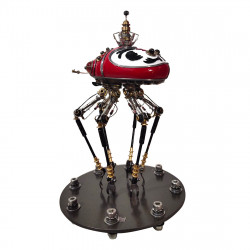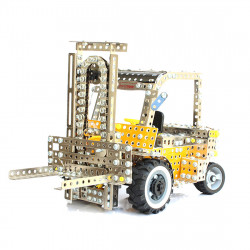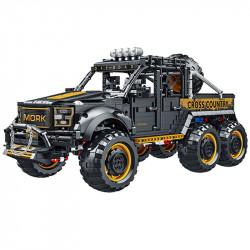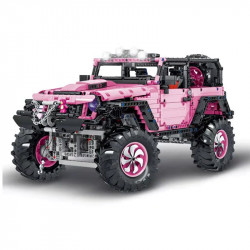The Connection Between 3D Metal Puzzles and STEM Education

The Connection Between 3D Metal Puzzles and STEM Education
Is it possible to teach STEM subjects using puzzles? Above all, are 3D metal puzzles considered STEM? How much do you know about 3D metal puzzles and how they affect children's and adults' cognitive development and problem-solving abilities?
Join us as we address these critical questions! Puzzles may be both informative and enjoyable. In actuality, contemporary, creative puzzles blend learning, entertainment, problem-solving, and simplicity into one delightful experience.
Your child is more likely to succeed in school, future career, and personality if exposed to STEM instruction, activities, and puzzles early. However, not all puzzles are created equal, so not all puzzle games can be a starting point for STEM instruction.
But one thing is sure: 3D metal puzzles offer everything children and adults require to learn new ideas, encourage critical thinking, and improve their cognitive powers.
What Is STEM Education?
STEM education is a multidisciplinary approach to teaching and learning. It offers a wide range of learning workshops, STEM puzzle games, and teamwork-based initiatives. STEM stands for math, science, technology, and engineering.
The STEM approach is a teaching and learning philosophy that incorporates all four components and repurposes them to enable students to think creatively, step outside their comfort zone, and push the boundaries of education and its uses.
The fundamental tenet of STEM education is instilling in students the freedom to question anything and promoting scholarly discussions. Because of this, STEM education has the potential to be a very effective means of encouraging both adults and children to develop sophisticated problem-solving abilities.
In essence, STEM fosters the development of critical abilities for emotional and social interactions, including:
- Communication;
- Collaboration;
- Problem-solving;
- Critical thinking;
- Logical reasoning.
STEM education aims to demonstrate how to use contemporary science and technology to enhance daily life. Students learn how to solve problems using the scientific method to improve their abilities and knowledge in a variety of blended learning contexts.
What Are 3D Metal Puzzles?
The simplest way to describe 3D metal puzzles is as complex, thought-provoking building kits that contain metal, magnetic, and electrical components. To accomplish the primary objective of creating an immersive 3D puzzle image, you must follow the instructions to put all the parts together.
These puzzles are all three-dimensional, as the name implies, and are made to educate you a lot about science, engineering, and enjoyment. Because of this, 3D metal puzzles will test every aspect of your abilities, including your capacity for logical reasoning, communication, teamwork, problem-solving, and critical thinking.
There are many different sizes, shapes, and levels of complexity for 3D metal puzzles. Their precision and amount of detail are the only things that surpass their exquisite design and sleek appearance. Because of these characteristics, 3D metal puzzle designs are far more than just straightforward games and toys.
They offer a sophisticated blend of captivating entertainment, interactive gamification, and immersive education, all seasoned with a healthy dose of science, to take your mind to the next level.
How Solving 3D Metal Puzzles Supports Team Learning
From better hand-eye coordination, self-esteem, and cognitive development to greater problem-solving, critical thinking, and logical reasoning, 3D metal puzzles offer innumerable advantages for both children and adults. Let's examine in more detail how these problems support group learning.
3D Metal Puzzles and Science
3D metal puzzles are based on engineering, science, and technology. They enable learning about these ideas through amusement and fun. Combining these components with a gamification approach to education can improve your understanding of cutting-edge, completely customizable physical ideas.
You may also learn more about various metal materials by solving 3D metal puzzles. Metal puzzles are not all made equal. Flat metal sheets are used to create the simplest 3D metal puzzle models.
On the other hand, the more sophisticated 3D metal puzzles use a variety of complex hardware materials that are intended to resemble functional models of the actual objects. You get to assemble a model of an insect, animal, vehicle, or well-known structure and complete a puzzle.
3D Metal Puzzles and Technology
Because 3D metal puzzles combine science and technology, you can investigate how they are related through the ubiquitous gamification aspects. You may have fun while learning about science, technology, and engineering by assembling metal, magnetic, and electronic components.
3D Metal Puzzles and Engineering
From vehicles, buildings, and landmarks to steampunk and sci-fi, 3D metal puzzles provide countless engineering possibilities. Whether you prefer assembling metal components or understanding how electronics operate, 3D metal puzzles will make complex engineering ideas easier to understand and enable non-engineers to produce one-of-a-kind, creative scientific artwork.
3D Metal Puzzles and Mathematics
Cross-platform schematics, where science and technology-infused mathematics converge, are the foundation of 3D metal puzzles. Despite their apparent simplicity, 3D metal puzzles demand you employ fundamental mathematical concepts and the universal language of numbers to complete the task.
Most 3D metal puzzle pieces are tiny cubes, hexagons, and other shapes. To solve the 3D puzzle image, you'll need to apply your mathematical skills to figure out how they all go together.
Other Learning Benefits of Solving 3D Metal Puzzles
3D metal puzzles improve brain function by simultaneously activating both hemispheres. They improve cognitive function, sharpen problem-solving abilities, and increase mental clarity in children and adults.
We'll quickly go over the educational advantages of resolving 3D metal puzzles below:
- Critical and strategic thinking – To strategically place the pieces and finish a puzzle, you can develop your critical thinking abilities by learning and internalizing colours, forms, and patterns.
- Teamwork and communication—Solving 3D metal puzzles can involve solo and group work. Children and adults learn teamwork through continuous communication and cooperation.
- Analytical skills – Using logical reasoning to examine the puzzle pieces' spot patterns and solve issues by joining all the matching dots is the most effective method for resolving 3D metal puzzles. This simple analytical procedure significantly enhances your analytical skills.
- Problem-solving – Better analytical abilities lead to better problem-solving skills.
- Focus – To solve a 3D metal puzzle, you must have a fair degree of focus, persistence, and patience. Long-term concentration exercises and puzzle-solving can help you develop these abilities.
- Increased attention span —3D metal puzzles encourage interactive and gamified learning experiences that lengthen attention spans in adults and children through scientifically fascinating exercises that demand sustained focus, patience, tenacity, and concentration.
- Memory improvement – Puzzle games are thought-provoking and help adults and children with their memory and cognitive abilities. They help children recognize and detect patterns by requiring them to commit each piece's shape, placement, and colour to memory. They can improve their cognitive and memory skills as a result.
As you can see, picking up a 3D puzzle has several benefits beyond just having fun.
Conclusion
Learning experiences could be gamified with 3D metal puzzles to make them more interesting, fun, and valuable. In addition to improving your ability to put things together, 3D metal puzzles offer you a singular chance to play comprehensive puzzle games that will push the boundaries of your knowledge in science, technology, engineering, and mathematics.
Using the power of challenging puzzles will allow you to push your cognitive and problem-solving abilities. Through immersive learning experiences, you can explore the fascinating world of 3D metal production, advance your mental skills, and develop into a pro-level problem solver.
